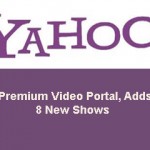 San Francisco — In its relentless quest to break the monotony of Internet advertising, search engine behemoth Google is attempting to bring the charm of the Sunday paper to the mix. The search engine giant is collaborating with advertisers such as Best Buy and Macy’s to create web-based circulars, similar to the ad inserts included in newspapers. The objective of the process is to lure more Web searchers into brick-and-mortar retail stores.
San Francisco — In its relentless quest to break the monotony of Internet advertising, search engine behemoth Google is attempting to bring the charm of the Sunday paper to the mix. The search engine giant is collaborating with advertisers such as Best Buy and Macy’s to create web-based circulars, similar to the ad inserts included in newspapers. The objective of the process is to lure more Web searchers into brick-and-mortar retail stores.
This interesting new service will be made available starting tomorrow as mentioned by the Mountain View company. “Maybe the best ads are just answers.” That is Google’s slogan for search ads, as described in the video below.
It is Advertising Week, and Google is discussing about their efforts in this department at the event in New York City. Thus, small businesses spending in AdWords programs should give a thought about how they can combine the new social and mobile features after Google introduced a range of new upgrades for search ads that will see integration with multimedia and social media.
An interview with Nick Fox, vice president of product management at Google, unfurled quite a lot of information on Google’s new venture.
In a blog post Fox says more businesses are using experimental methods of advertising through AdWords, including the addition of media ads which include video within search ad results.

Fox stated that, in general, retail is a big group for Google, commenting that “They are trying to understand what the answer is in the digital age to the offline print circular. They are trying to figure out how to get their online visitors into their stores. And this is our answer to that.”
The world’s biggest search engine is seeking out ways to parlay that leadership into new sources of revenue. Search advertising also is increasingly shifting toward using more visual elements, including video and product images, a break from the text-only listings of the yesteryear. Almost a third of Google’s search ads now use the newer formats, up from about a quarter at the beginning of the year, Fox said.
According to Fox, about a third of searches with ads displaying a new enhanced ad format. New formats include a blend of the visual, the local and the social.
“Not only can you find theater times for a new movie, you can watch the trailer directly in the ad,” explains Fox. “Media ads put the sight, sound and motion of video into search ads. With Product Ads, people can see an image, price and merchant name, providing a more appealing visual shopping experience. Because this format is often so useful, people are twice as likely to click on a Product Ad as they are to click on a standard text ad in the same location, and today, hundreds of millions of products are available through Product Ads.”
But as Fox describes, more than 20% of desktop searches on Google are linked with location and on mobile that figure jumps to 40%. He points to location extensions, which enable businesses to attach an address to any ad campaign.
“With our mobile ad formats, not only can you call a restaurant straightaway from the ad, you can also learn how far away the restaurant is located and view a map with directions,” he says.

After clicking on the ad, Google users will see promotions with several pictures and larger type when they click on search ads and, eventually, banner display ads and multiple pictures. Basic of factors like user location and query topics will craft the promotions automatically.
Interestingly, Google’s ad-serving application will actually create the promotions on the fly, based on query topics users enter, as well as their locations. For instance, a search for a Macy’s in Manhattan will likely return ads more geared to that retailer’s locations in New York City than those in suburban Connecticut.
“Location-aware search ads can help you find what you are looking for more easily by putting thousands of local businesses on the map–literally. More than 270,000 of our advertisers use Location Extensions to attach a business address on at least one ad campaign, connecting more than 1.4 million locations in the U.S. via ads.”
Google will capture 76% of the U.S. market for search-based ad revenue this year, up from 74% in 2010, according to estimates from EMarketer. Next year, Google may expand to 78%, the research firm said.
“It is becoming a core part of what our advertisers are doing,” Fox said.
But Google also points to the addition of the +1 button, which has been associate with several search ads since earlier in the year.
Stewart Media chief executive Jim Stewart says this is the area where businesses need to be paying the most attention.
“If you are doing AdWords that is certainly the one you need to be aware of because it was rolled out first,” he says. “The multimedia aspect of the ads is interesting as well, although they have done that before.”
Even as it attempts to replicate print advertising online, Google is not disregarding old-fashioned media. To promote its new ad formats, the company is rolling out a marketing campaign that will include both internet and print advertising, Fox said.
Moreover, the move comes as Google is pushing more businesses using its services to adopt mobile and social strategies as it promotes Android and mobile search as two of its biggest product streams.
In addition, it also comes as another report suggests that Google is in discussion with some of America’s largest retailers to create new types of “circular” ads that have the same likeness as paper catalogs. Google offers quick glimpses to its various search ad formats here.
{iframe width=”640″ height=”360″ align=”top”}http://www.youtube.com/embed/4uLwC5PAi7g{/iframe}


